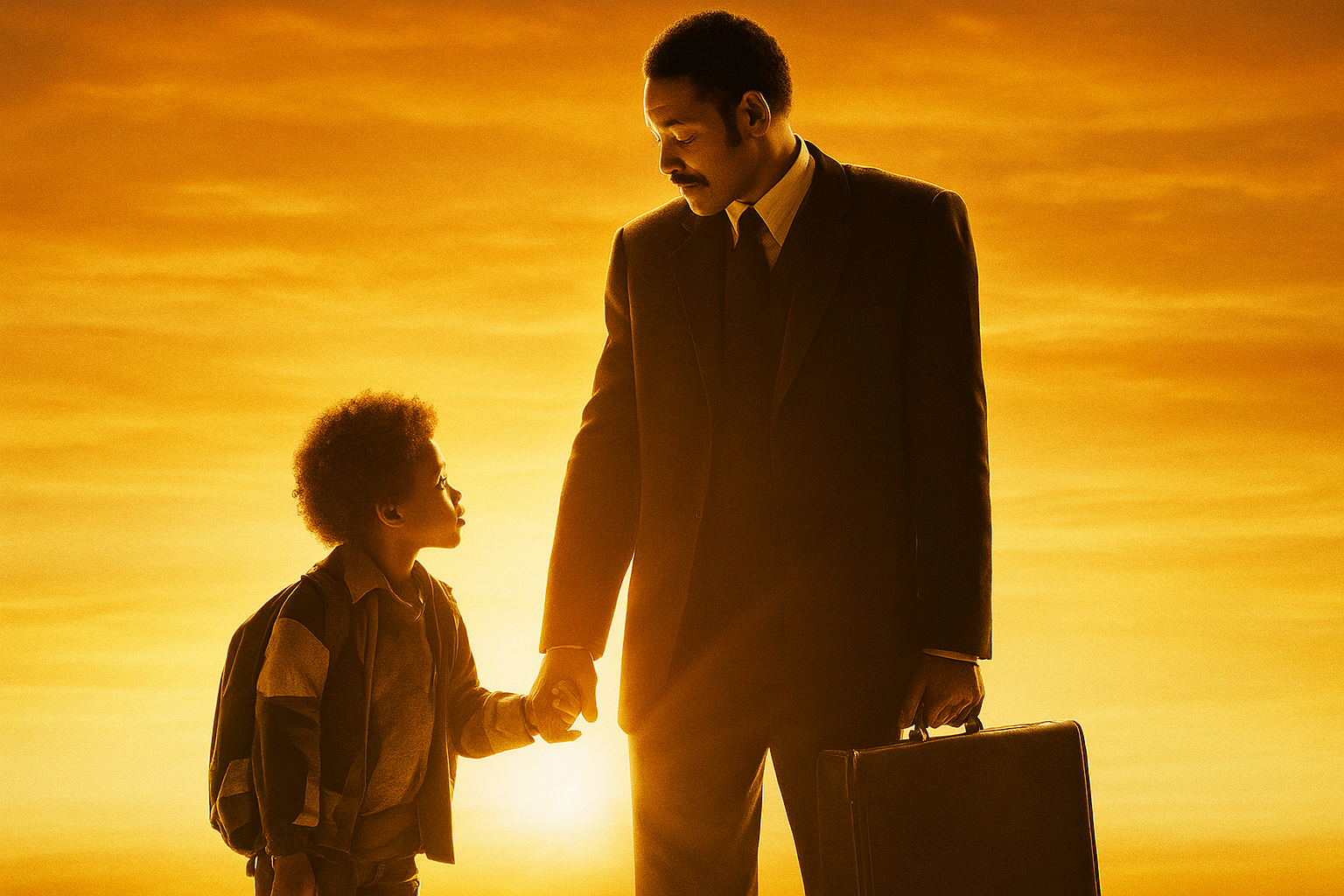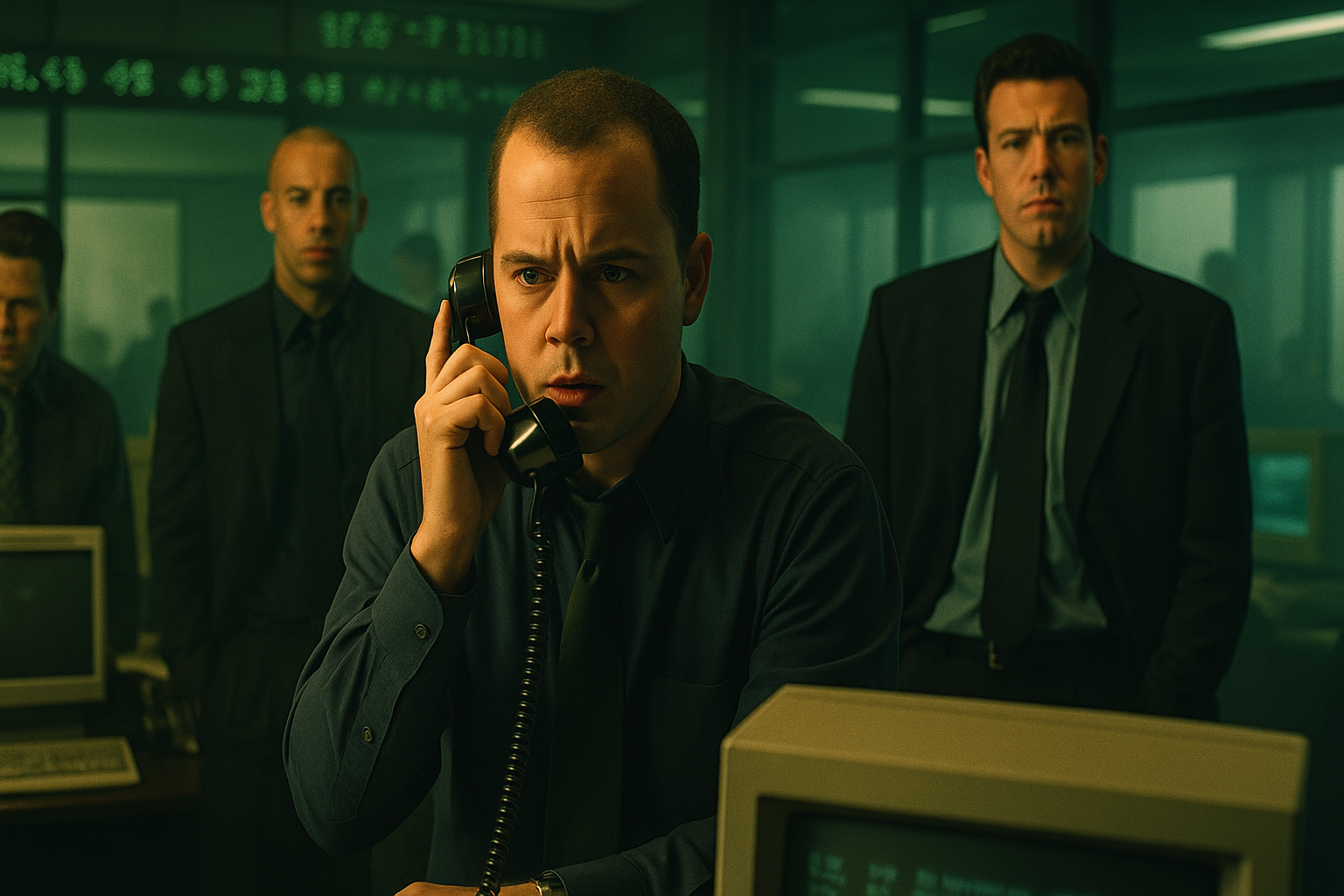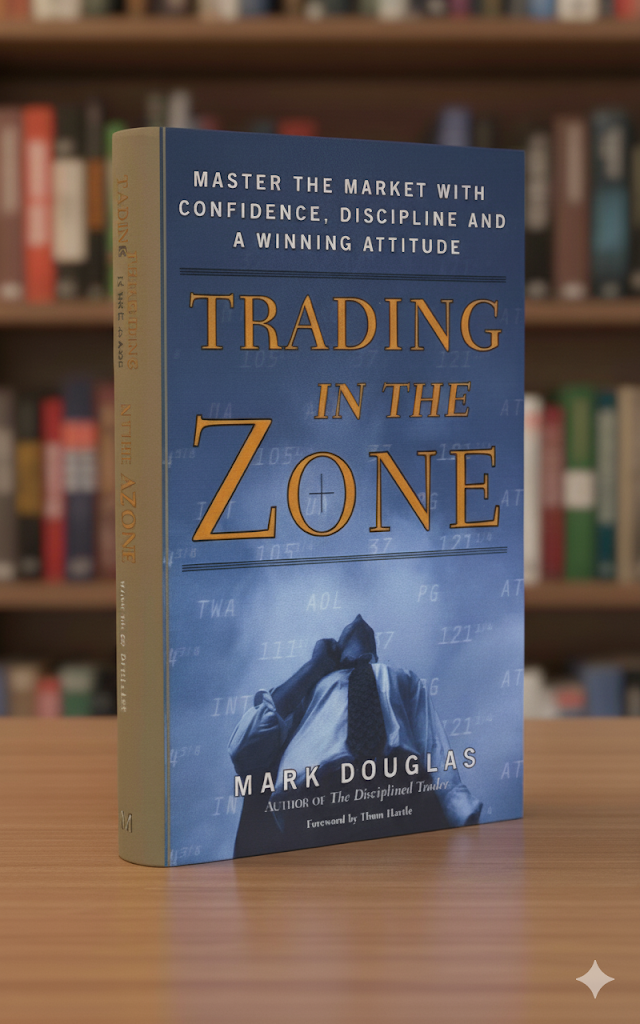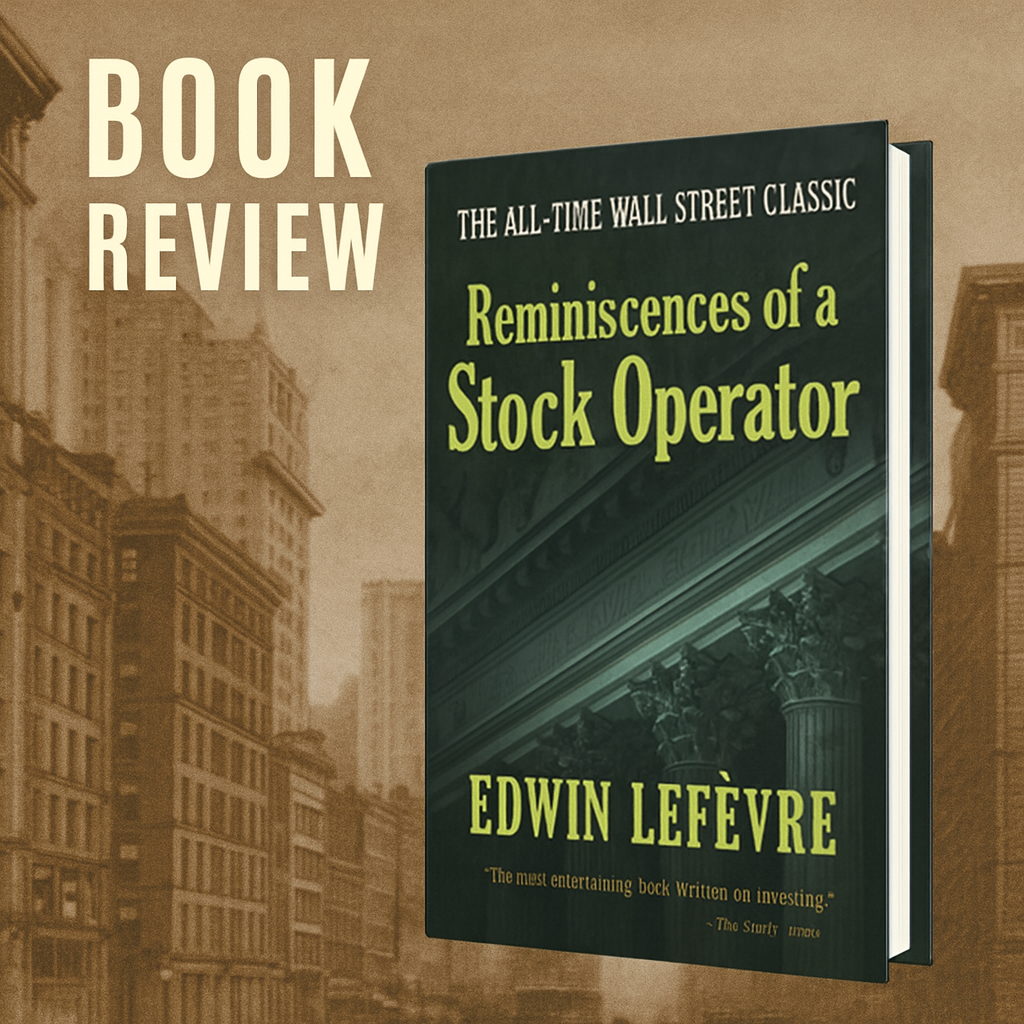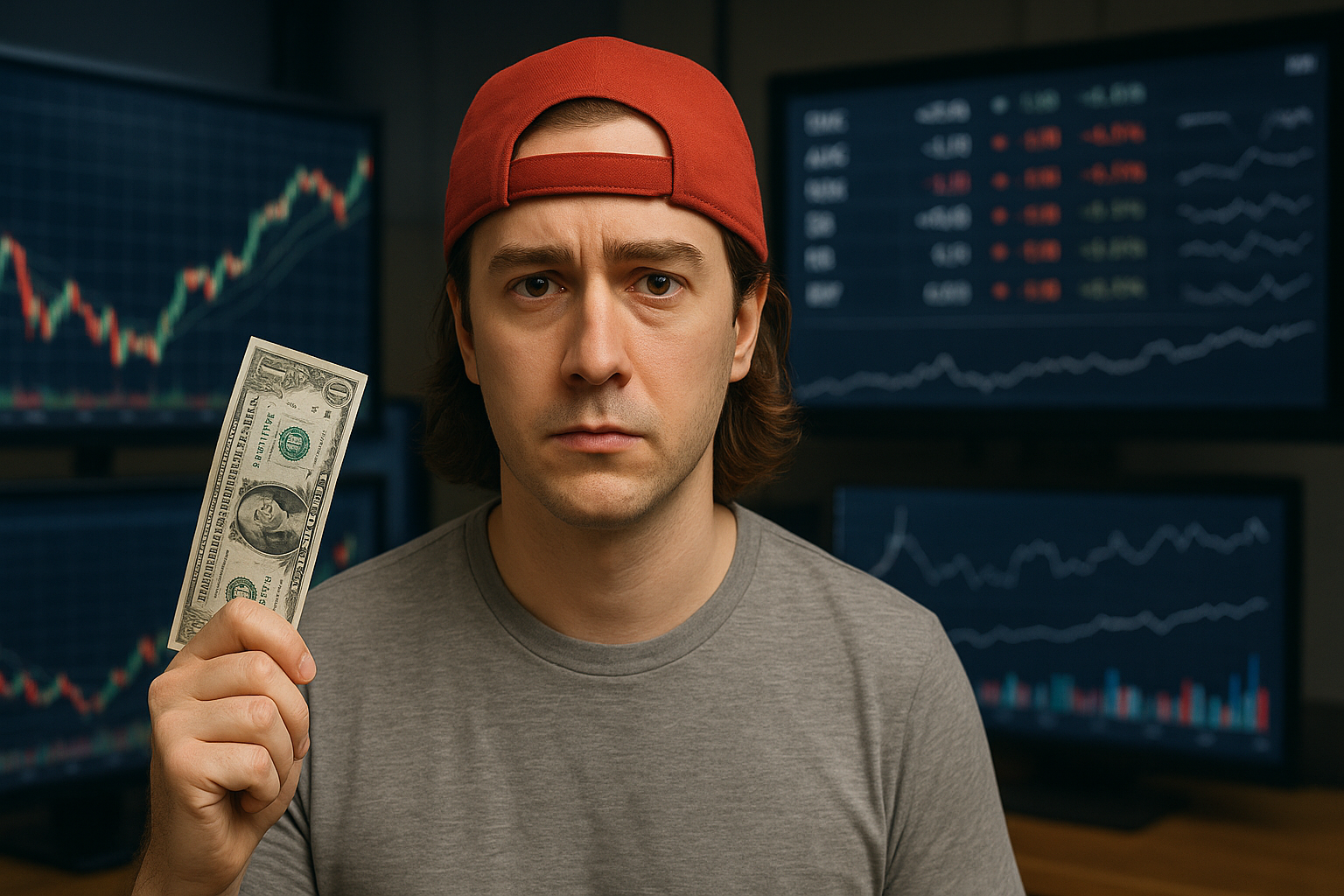The Pursuit of Happyness isn’t a Wall Street spectacle—it’s a street-level survival story with lessons every trader should recognize. Gabriele Muccino’s film turns Chris Gardner’s free fall into a crisp study of liquidity, optionality, and execution under pressure. Here’s what it captures about the grind, what it smooths for drama, and how to translate its discipline into trading practice.
Synopsis
Gabriele Muccino’s The Pursuit of Happyness follows Chris Gardner (Will Smith), a San Francisco medical-equipment salesman whose life teeters into free fall after a bad bet on portable bone-density scanners. The devices are expensive, slow to sell, and quickly made obsolete—inventory masquerading as an “investment.” As cash flow collapses, Gardner’s marriage disintegrates, eviction follows, and he and his young son (played by Smith’s real-life son, Jaden Smith) rotate through shelters while Gardner claws for a lifeline: an unpaid internship at Dean Witter Reynolds that promises a single full-time offer to the top performer.
The film’s narrative economy is brutal and effective. Gardner pawns what remains of his assets, sprints between sales calls, studies for the Series 7 at night, and learns to compress his cold-calling cycle—dialing without hanging up the phone to save seconds—because time is the only capital he has left. The turning point arrives when he delivers a deft solution for a high-net-worth client during a fraught brokerage floor scene, demonstrating not just technical competence but controlled demeanor under stress. The ending is well known: he wins the job. The spoiler matters only because the ascent is less about luck than a sequence of credible micro-decisions in risk, resource management, and execution.
Cinematic Qualities
Will Smith gives a grounded performance that avoids sentimentality. His Gardner is disciplined, intelligent, occasionally impulsive—credible in both defeat and poise. Jaden Smith’s presence provides warmth without the cloying precocity that sinks lesser films. Muccino’s direction favors close-quarters realism: cramped apartments, fluorescent-washed broker bullpens, low-angle shots that emphasize the physical weight of poverty. Pacing is brisk but not rushed; the film permits moments of quiet fatigue that communicate both the grind of sales and the mental load of insolvency.
Production design is unshowy, which suits the material. This is not high-gloss Wall Street cinema; the financial world here is paper ledgers, rotary phones, and the muscle memory of dialing. Andrea Guerra’s score is restrained, supporting emotion rather than instructing it. If the film has a weakness, it’s occasional on-the-nose dialogue—speeches about “happiness” and the American Dream—yet the performances keep it just inside the lines of authenticity.
Trader’s Lens
Core Concepts: Risk, Liquidity, and Optionality
Gardner’s initial failure is a case study in liquidity risk and the perils of confusing price with value. He sinks family savings into illiquid scanners with limited utility and a rapidly deteriorating competitive moat. The investment is long duration (slow sales cycle), high carrying cost (time and foregone income), and exposed to technological obsolescence—an asymmetric payoff in the wrong direction. Traders will recognize the lesson: if you cannot exit a position quickly at a fair price, you may not own an “asset”; you may own a liability masquerading as hope.
The unpaid internship reframes the problem as a call option on a career. Gardner pays a steep premium—lost wages, higher personal volatility, downside tail risks like homelessness—in exchange for the right, not the obligation, to secure a seat at a brokerage. He maximizes this option’s delta by converting effort directly into measurable outputs: calls placed, meetings secured, accounts opened. The movie repeatedly depicts funnel management, a concept more familiar to sales desks than trading pits, but tightly aligned with execution discipline: inputs → process → outcomes, reviewed daily.
Lessons for Traders
1) Capital isn’t just money—it’s time and attention. Gardner identifies time leaks (walking to prospects, redialing) and closes them. On a trading desk, the analog is automation for routine tasks and pre-commitment to risk limits before the open. Edge often accumulates in seconds saved and errors avoided.
2) Define risk in cash-flow terms. Gardner’s problem is not theoretical insolvency; it’s daily liquidity. He prioritizes receivables (collecting payment for scanners) and advances to cover essentials. Traders who think in P&L without mapping to cash needs—margin calls, funding, borrow availability—risk the same fate.
3) Process beats inspiration. The film’s most instructive montage is paperwork, practice tests, and cold calls. There’s no genius trade, only incremental improvement. For market participants, that means journaled hypotheses, post-trade reviews, and small-N experiments before scaling.
4) Volatility is personal. Gardner cannot control macro conditions but controls his response function: he remains courteous to gatekeepers, calm with clients, and present with his son. In trading, your Sharpe ratio includes your psychology; panic widens slippage.
5) Don’t average down on a broken thesis. The scanners are a sunk cost. Gardner learns to stop chasing their sale price as proof of judgment. The trader’s equivalent is cutting losers that violate your premise rather than throwing capital after narrative.
Accuracy vs. Dramatization
The portrayal of brokerage life in the early 1980s is broadly credible: cold calling, prospect lists, a high attrition internship funnel, and the importance of securing a large anchor account. The speed at which Gardner converts a prospect into a material client is compressed for narrative clarity, but not implausible given charisma, preparation, and a vacant niche. The film sidesteps market specifics—there are no detailed discussions of products, regulations, or execution mechanics—but it captures the industry’s old-school sales ethos: relationship first, product second.
Where the story leans cinematic is the extremity of Gardner’s luck timing—critical calls coinciding with catastrophic housing events—and the clean arc from homelessness to job offer. In reality, even peak performance in an internship does not guarantee conversion, and personal hardship more often degrades professional output. Yet the dramatization is in service of an authentic point: effort and discipline improve the distribution of outcomes even when the mean looks bleak.
Psychology & Culture
The Pursuit of Happyness is not a morality play about excess; it is a portrait of scarcity psychology. Traders often debate “fear vs. greed,” but the more operative axis here is “scarcity vs. agency.” Scarcity narrows cognition, pushes short-termism, and breeds error. Gardner fights this by imposing structure: daily quotas, study schedules, and a code of conduct that preserves dignity (he dresses well, keeps promises). That discipline creates space for better decisions under pressure.
The culture of the brokerage is competitive but meritocratic in a limited, era-specific way: numeric targets matter, and social cues (a firm partner’s rubik’s cube, a shared cab) create network surface area. Gardner’s success is as much social engineering as technical competence. For market professionals, the lesson isn’t networking for its own sake; it’s recognizing that information and opportunity flow through relationships. The film also hints at ethical ambivalence: the internship is unpaid, selection is opaque, and the environment can be exploitative. Gardner’s personal ethics—forthright, non-predatory selling—provide the counterweight, suggesting that sustainable success rests on trust capital, not just revenue.
The father-son dynamic deepens the psychology. Gardner’s choices are anchored by stewardship: he calibrates risk not simply to maximize expected value, but to minimize catastrophic outcomes for his child. In markets, this maps to drawdown control and career risk. Live to fight another day is not platitude; it’s policy.
Audience Fit
Retail traders and aspiring professionals: Highly relevant. The film is a primer on process discipline, time management, and emotional regulation—skills more predictive of survival than any single strategy.
Finance students: Useful as a case study in opportunity cost, human capital investment, and the sociology of entry-level finance. Pair with readings on behavioral economics (scarcity mindset, grit) and labor market dynamics.
Industry insiders: Less novel on market mechanics, but resonant as a reminder of first principles—pipeline, persistence, and character under constraint.
General audiences: Accessible and emotionally engaging, though some may find the internship’s unpaid nature and the bootstrap framing contentious. The film is careful to show that grit matters, but it does not pretend systemic barriers are imaginary.
Strengths and Shortcomings
Strengths:
- A rare finance-adjacent film that centers on inputs over glamour—calls, notes, and the grind.
- Will Smith’s performance communicates professional composure without sanding off desperation’s edges.
- Clear, teachable moments about liquidity, sunk costs, and optionality.
Shortcomings:
- Limited attention to the ethical and regulatory environment of brokerage sales, reducing the industry to pure hustle.
- Occasional uplift crescendos risk sentimentalizing structural hardship.
- The compression of sales cycles and internship conversion may give an overly tidy sense of payoff probability.
Practical Takeaways for Traders
- Write your daily risk plan before the bell. Gardner’s daily call quota is the sales analog of pre-set risk limits and trade plans. Decide in calm what you’ll do in chaos.
- Guard your liquidity. Map positions to cash needs and margin requirements. Avoid “scanner” trades—illiquid, high carry, narrative-heavy.
- Institutionalize your review loop. Track hypotheses, entries, exits, and emotions. Gardner studies every night; traders who don’t post-mortem their decisions outsource learning to chance.
- Invest in relationships with delayed payoff. As with Gardner’s early-stage prospects, treat networking as building deep out-of-the-money options: small cost, potential convexity later.
- Respect survivorship bias. Gardner’s success is extraordinary; many equally disciplined peers would fail. Manage expectations accordingly and size your “career trades” with humility.
Verdict / Rating
8.5 / 10.
The Pursuit of Happyness is less a finance movie than a manual on execution under duress. For traders, its core message is operational: work with the balance sheet you have, not the one you want. Treat time as capital, liquidity as oxygen, and discipline as the only edge that compounds regardless of market regime. The film’s trader-focused takeaway: Success is not a single big trade; it is the ruthless elimination of wasted motion, the clean cut of sunk costs, and the steadiness to survive long enough for convexity to find you.





